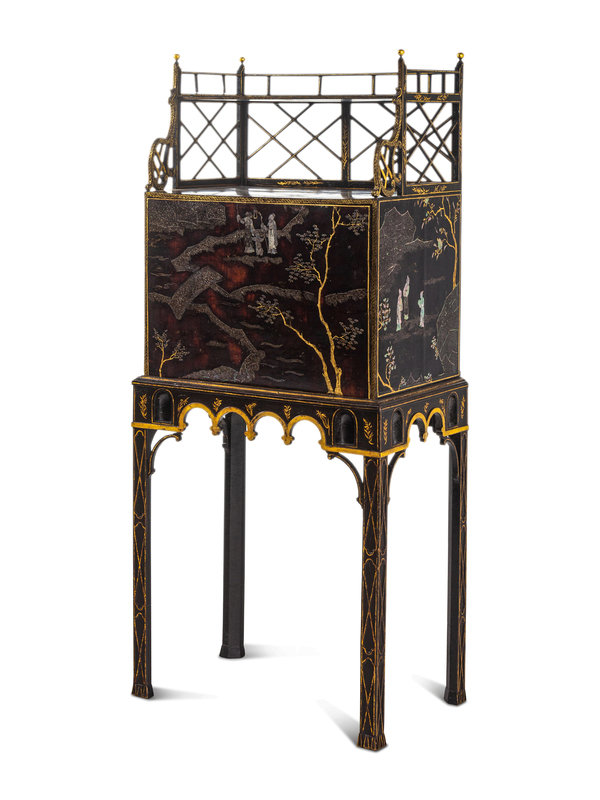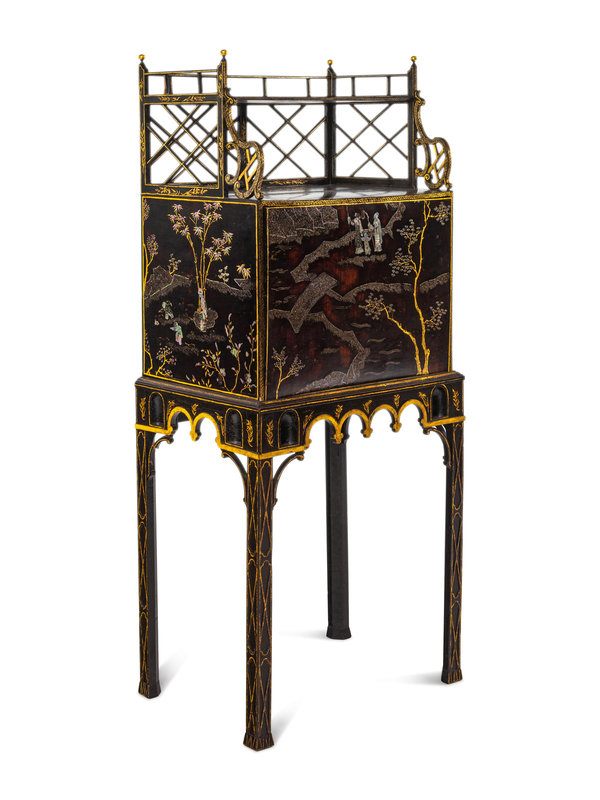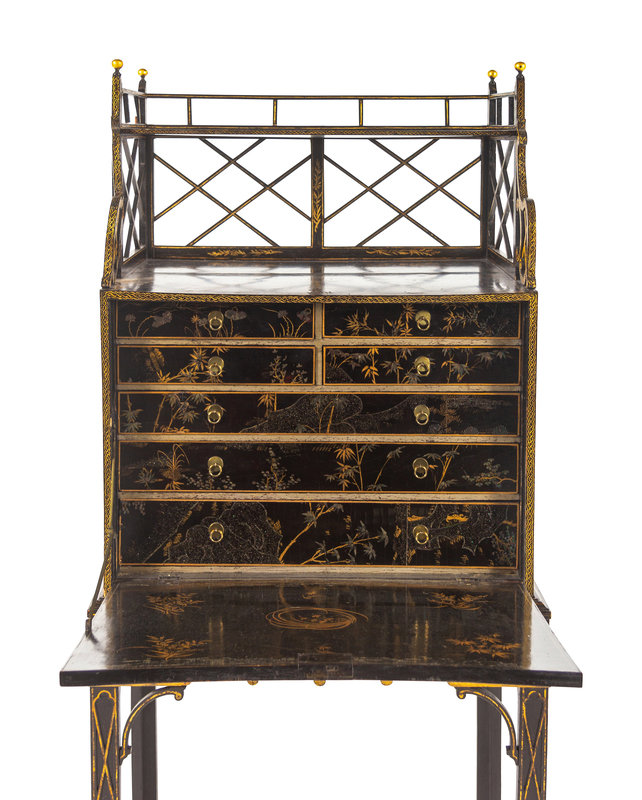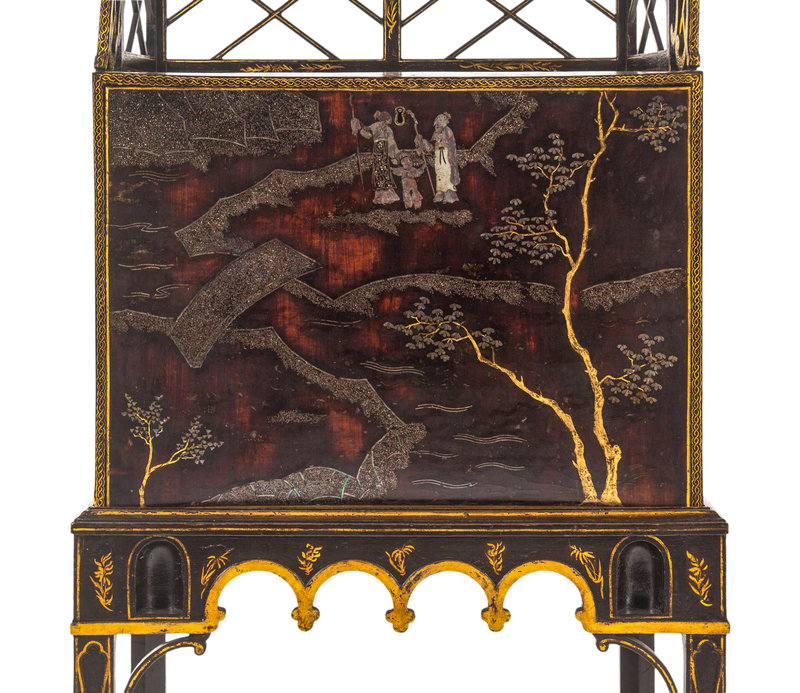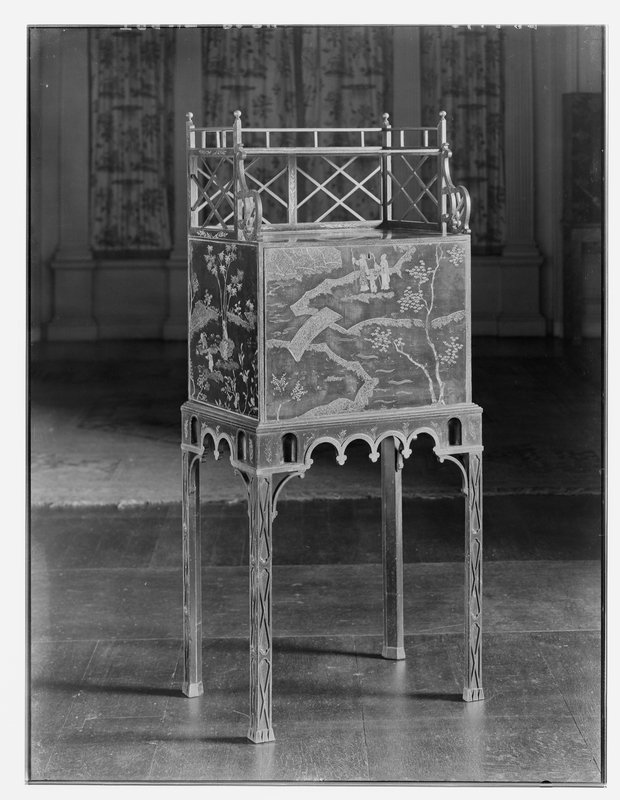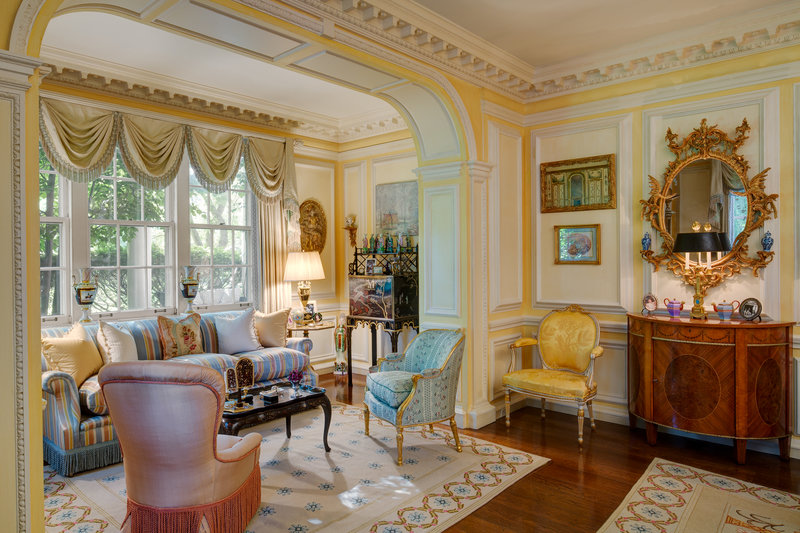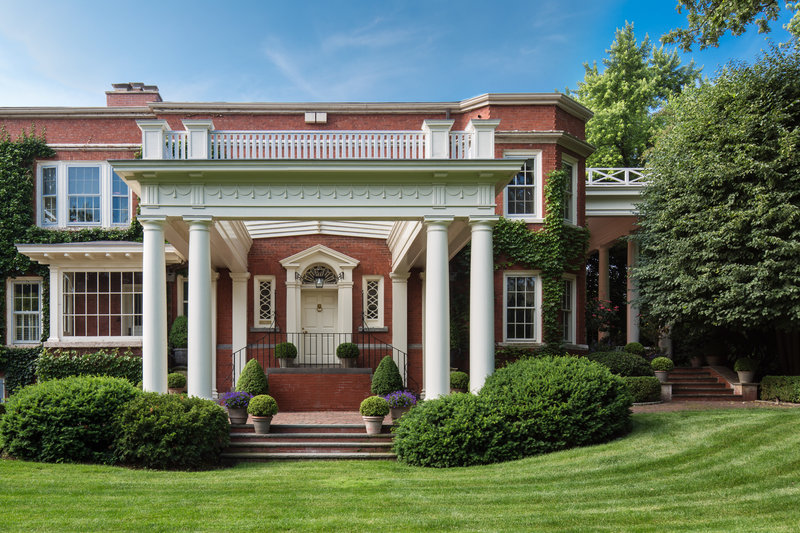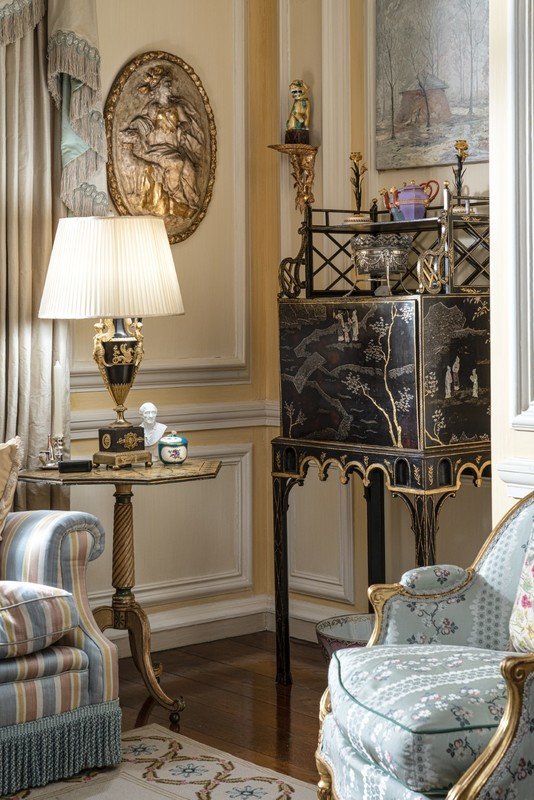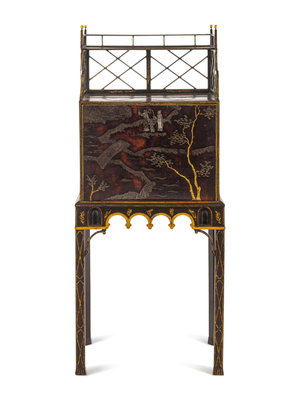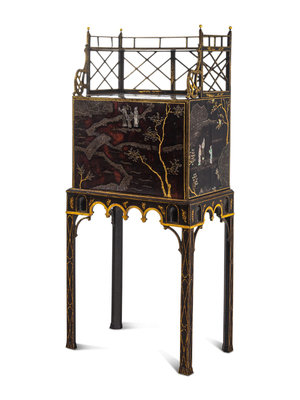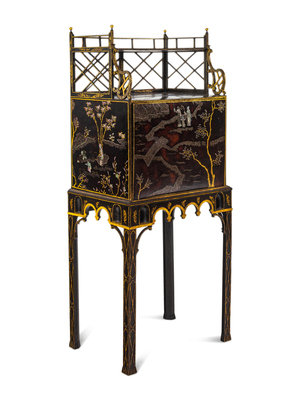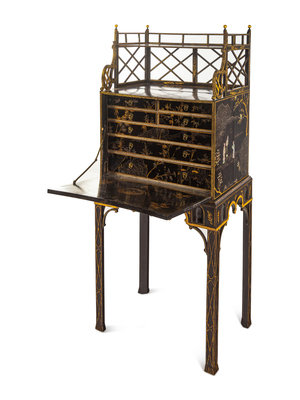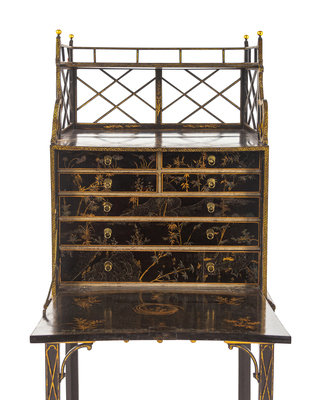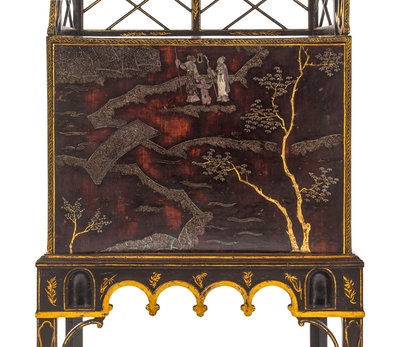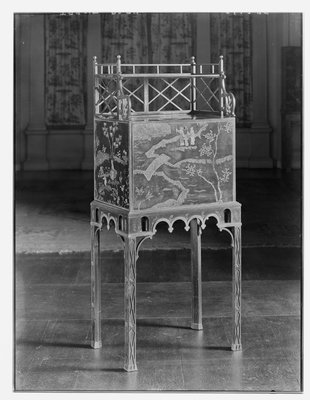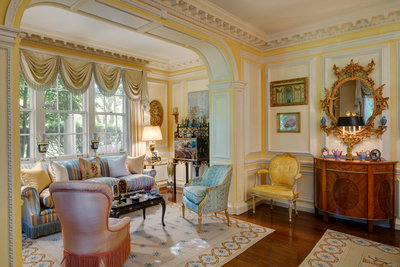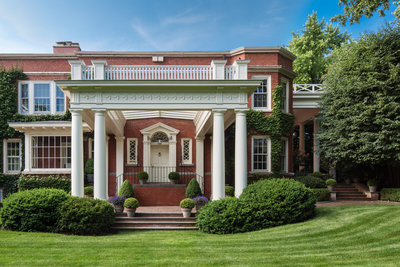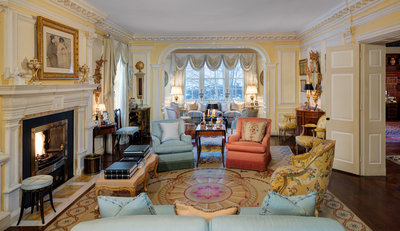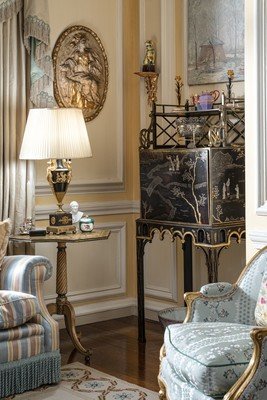A George III 'Lac Bergaute' and Black and Gilt-Japanned Secrétaire Cabinet-on-Stand
Sale 1157 - Property from the Fred and Kay Krehbiel Collection, Part I
Mar 15, 2023
10:00AM CT
Live / Chicago
Own a similar item?
Estimate
$15,000 -
25,000
Price Realized
$15,120
Sold prices are inclusive of Buyer’s Premium
Lot Description
A George III 'Lac Bergaute' and Black and Gilt-Japanned Secrétaire Cabinet-on-Stand
Circa 1765, Incorporating 17th Century Chinese Lacquer Panels
Height overall 61 x width 26 x depth 18 1/4 inches.
This lot is located in Chicago.
Provenance:
Sir Phillip Sassoon, Bt., Trent Park, Hertfordshire, recorded in Sir Philip's bedroom in 1939;
Christie's, London, Works of Art from Collections of The Cholmondeley Family and the Late Sir Philip Sassoon, Bt. from Houghton, 8 December 1994, Lot 117 (with catalog)
James Hepworth, London, 5 June 1996 (with copy invoice)
Literature:
C. Hussey, "Japanned Furniture at Trent Park," Country Life, 18 October 1930, p. 498, fig. 4
P. Macquoid and R. Edwards, The Dictionary of English Furniture, London, rev. ed., 1954, Vol. I, p. 85, fig. 43
R. Edwards, The Shorter Dictionary of English Furniture, London, 1964, p. 101, fig. 30
Note:
With its 17th century Chinese lacquer panels lushly inset with mother of pearl, this elegant secrétaire epitomizes the height of the English fascination with the East popularized by the designs in Thomas Chippendale’s The Gentleman and Cabinet-Maker’s Director, 1754-1763. Their frequent combination of Chinese elements within an at times blinding array of naturalistic and Classical forms served as inspiration and a creative ideal. Elements from Chippendale’s designs, such as the fretwork seen on the legs of the present lot, depicted in China Shelves (plate CLXI) and the Chinese Cabinet (plate CXXIII) from 1761, were likely drawn upon by this as yet unknown cabinet-maker. The secrétaire's sophisticated mélange of Chinese and Western ornament, and particularly its use of lac bergaute, an incredibly rare and expensive form of Chinese lacquer, indicates it was almost certainly a specific commission by an unknown aristocratic patron similar to the 4th Duke of Badminton (1704-1759). His Chinoiserie bedroom apartment at Badminton, Gloucestershire, which was supplied by William and John Linnell in the 1750s has two related japanned china cabinets which show yet another interpretation of this all-encompassing aesthetic (H. Hayward, William and John Linnell, London, 1980, fig. 218).
The descendant of two prominent Jewish banking families, the Sassoons and the Rothschilds, politician, patron and connoisseur Sir Phillip Sassoon (1888-1939) was at home in the highest aristocratic circles. Sassoon’s aesthetic eye saw the potential of Trent Park, an unremarkable house with grounds designed by the pre-eminent 19th century landscape architect Humphry Repton (1752-1818) and hired the architect Philip Tilden (1887-1956) to transform the house into a Georgian mansion worthy of this setting. The eminent British architectural historian Christopher Hussey (1899-1970) said that Sassoon captured "that indefinable and elusive quality, the spirit of a country house... an essence of cool, flowery, chintzy, elegant, unobtrusive rooms that rises in the mind when we are thinking of country houses.” Trent Park and its grounds were documented in the 18 October 1930 issue of Country Life. After Sassoon’s death, this cabinet and other works from his collection went to Houghton, the home of his sister Sybil, Marchioness of Cholmondeley (1894-1989).
Photo Credit: Japanned Cabinet, Trent Park from Country Life, 18 October 1930: Future Publishing Ltd.
James Hepworth, London, 5 June 1996 (with copy invoice)
Literature:
C. Hussey, "Japanned Furniture at Trent Park," Country Life, 18 October 1930, p. 498, fig. 4
P. Macquoid and R. Edwards, The Dictionary of English Furniture, London, rev. ed., 1954, Vol. I, p. 85, fig. 43
R. Edwards, The Shorter Dictionary of English Furniture, London, 1964, p. 101, fig. 30
Note:
With its 17th century Chinese lacquer panels lushly inset with mother of pearl, this elegant secrétaire epitomizes the height of the English fascination with the East popularized by the designs in Thomas Chippendale’s The Gentleman and Cabinet-Maker’s Director, 1754-1763. Their frequent combination of Chinese elements within an at times blinding array of naturalistic and Classical forms served as inspiration and a creative ideal. Elements from Chippendale’s designs, such as the fretwork seen on the legs of the present lot, depicted in China Shelves (plate CLXI) and the Chinese Cabinet (plate CXXIII) from 1761, were likely drawn upon by this as yet unknown cabinet-maker. The secrétaire's sophisticated mélange of Chinese and Western ornament, and particularly its use of lac bergaute, an incredibly rare and expensive form of Chinese lacquer, indicates it was almost certainly a specific commission by an unknown aristocratic patron similar to the 4th Duke of Badminton (1704-1759). His Chinoiserie bedroom apartment at Badminton, Gloucestershire, which was supplied by William and John Linnell in the 1750s has two related japanned china cabinets which show yet another interpretation of this all-encompassing aesthetic (H. Hayward, William and John Linnell, London, 1980, fig. 218).
The descendant of two prominent Jewish banking families, the Sassoons and the Rothschilds, politician, patron and connoisseur Sir Phillip Sassoon (1888-1939) was at home in the highest aristocratic circles. Sassoon’s aesthetic eye saw the potential of Trent Park, an unremarkable house with grounds designed by the pre-eminent 19th century landscape architect Humphry Repton (1752-1818) and hired the architect Philip Tilden (1887-1956) to transform the house into a Georgian mansion worthy of this setting. The eminent British architectural historian Christopher Hussey (1899-1970) said that Sassoon captured "that indefinable and elusive quality, the spirit of a country house... an essence of cool, flowery, chintzy, elegant, unobtrusive rooms that rises in the mind when we are thinking of country houses.” Trent Park and its grounds were documented in the 18 October 1930 issue of Country Life. After Sassoon’s death, this cabinet and other works from his collection went to Houghton, the home of his sister Sybil, Marchioness of Cholmondeley (1894-1989).
Photo Credit: Japanned Cabinet, Trent Park from Country Life, 18 October 1930: Future Publishing Ltd.
Condition Report
Auction Specialist

